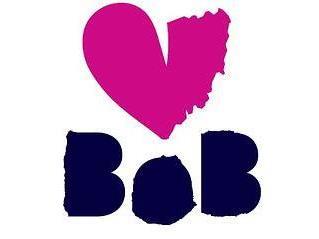On Sunday, I started an international disability arts festival called Beyond Our Boundaries (BOB). I had nothing but the idea to bring organisations in the disability sector together to work on a collaborative project for collective benefit. But how do you start something with nothing? Creators, inventors, artists, makers, designers, painters, performers, entrepreneurs and imagineers all do it. Start with nothing and create something. They drive our world, shed light and provide perspective, insight and contradiction whilst inspiring others to dream, reflect, express and pursue opportunities previously unseen or seen as impossible. The world is truly a stage (and a film set and an art gallery), but there is pain:
- Of artists, underpaid and overworked
- Of arts festivals and organisations, under resourced and over committed
- Of arts funding agencies, criticised for being irrelevant and bureaucratic
- Of producers and exhibitors, under pressure to make budget and attract audiences
- Of audiences, disappointed by irrelevance, poor quality and inconsistency in the art it consumes
Whilst artists cry poor, arts funders are stretched. There is not enough: money, recognition or resourcing. What’s the answer? How do we soothe this pain in the arts? Perhaps using the metaphor of rectal pain management it can be explored how the pain might be overcome, via the five stages of the healing process:
Understanding
- Acceptance
- Taking responsibility
- Seeking help
- Remaining positive
Understanding
Without oversimplifying it, the issue is need. With need we are wanting. Without need we are content. The need for artists is usually money or acknowledgement; the pain is the gap between what we feel we need and what we have. A need is identified, an idea is born, a project is developed to satisfy the need, a request is made (or grant application is written) and it’s accepted or rejected. The fate of our artists and arts practitioners often lies firmly in the hands of people other than those whose need might be satisfied in delivering the project. The funding process is such that many ideas are cut off at the knees before receiving the chance to fulfil a need. Dissatisfying for all concerned. Is there another way? The flipside of recognising the ‘pain of need’ is awareness of the opportunities needs create. For a start, others might have the same need and want to collaborate to satisfy it. Secondly, others have needs too which, if understood fully, might support, connect with or help solve ‘the problem’ of satisfying your own needs. An artist needs funding, a funding agency needs to give it. Everybody wins.
Acceptance
To dwell in the pain of ‘need’ is not necessarily helpful and certainly won’t make it disappear. Working towards a strategy for relief seems far more interesting than focusing too heavily on the pain itself. A more productive spin on the same subject, viewing needs as opportunities, exploring tools to help deal with the ‘not enough’ mentality, considering methods and means which empower artists and arts practitioners to pursue a more satisfying result seems more relevant and appropriate. Scott Peck says: “Life is difficult. Once we truly know this, once we truly understand and accept it, then life is no longer difficult. Because once it is accepted, the fact that life is difficult no longer matters.”
Taking Responsibility
When you have nothing and you want something at least, if you choose to pursue it, you have nothing to lose. This, of course, begs the question: if we can do something with nothing, can we do more with less? The answer is ‘probably’. We, artists and those working in the arts, cultural and creative sectors, have the power to create, make stuff happen, create magic. We can and we have. And if we think we can’t, there will always be someone who will. We’re currently riding a new wave of cultural entrepreneurship, which effectively means identifying, creating and pursuing opportunities which satisfy a range of needs and deliver an artistic or creative product, project or initiative for financial return. Art and business might be mutually exclusive. Artists should not be expected to think about money. Or should they? Taking responsibility for the pain means thinking and behaving proactively to help ease or avoid it. Have a vision. Know what you want and where you’re headed. Articulate it. Spell it out and use your vision to create a plan. In the words of Oscar Hammerstein: “If you never have a dream, you never have a dream come true“. Surely, that’s terrific incentive to take responsibility and create one.
Seeking Help
Whilst many suffer in silence, artists and creative projects and companies thrive around the world. There are successful role models and people to seek advice and mentorship from. Gathering networks, partners and support for any creative pursuit is a key to achieving ‘success’ however you choose to define it. Look on the ‘sponsor page’ of any major performing arts company’s website. There are partners galore. Partners, supporters, donors, contributors, friends and patrons are all required to ensure needs are satisfied and the company’s objectives are met. The partners reduce the risk and potential ‘pain’. But why do people and partners want to help? Because it satisfies a need of their own.
If you had a genuine issue with your rectum, you would ideally seek help: see a doctor, confide in a loved one (if it was serious). Your need to soothe your pain in the arts involves communicating it and gathering support, networks, friends and contributors to help you achieve relief (remuneration, recognition and/or ‘success’). Don’t be a victim.
Remaining positive
It’s not easy, nor straightforward and there are no easy answers. Everybody’s pain and need is different. So be positive, know what you want, keep your eye on the prize (your dream) and find ways to make it the dream of others. Pain is inevitable but suffering is optional.





